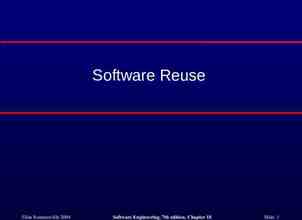Viewing Films Actively Written Responses to Motion Pictures Paige
25 Slides682.00 KB
Viewing Films Actively Written Responses to Motion Pictures Paige Mayhew Oklahoma Writing Project
“The schools do not have the power to change public acceptance of the visual media. Training students to understand and use them would be far more productive than to endlessly deplore the quality of television and film.” -Marion Blue
“As students view a film, we want them to pay special attention to those areas of the film we consider important and to draw conclusions from their experience with the film. Only then does a passive viewer become active; for by thinking about the film’s content, the student is interacting with the film.” -Resch and Schnicker
According to Corrigan “Writing about films can serve one or several functions. It help you: Understand your own response to a moviecan better Convince others why you like or dislike a film Explain or introduce something about a movie, filmmaker, or a group of movies that your readers may not know Make comparisons and contrasts between one movie and others, as a way of understanding them better Make connections between a movie and other areas of culture in order to illuminate both the culture and the movies it produces.”
Analyzing Films Three ways of looking at a movie
Literary Aspects of Film Those aspects that films share with literature: plot characters setting themes point of view recurring images symbols
Questions to ask when viewing on a Literary Level: Who are the characters? What is the setting? What is the plot? From whose point of view is the story told? What is the film’s theme? Are there any symbols or recurring images?
Dramatic Aspects of Film Those elements film shares with live drama: actors portraying characters through dialogue, costumes, and makeup sets and/or locations directors who leave personal stamp on final product
Questions to ask when viewing on a dramatic level: How effective is the acting? Why? How does the set affect understanding and enjoyment of the story? How are the costumes and makeup effective in establishing a character?
Cinematic Aspects of Film Elements unique to film Requires some knowledge of technical terms
Examples of Technical Terms
Close Up (CU) A shot of one face or object that fills the screen completely. Gives importance to object Allows us to see the emotion of a particular character USUAL SUSPECTS
High Angle (h/a) HIGH NOON Angles are defined by where the camera is placed Camera looks down on what is being photographed Takes away power of the subject of shot
Long Shot (LS) A relative term A shot taken from a sufficient distance to show a landscape, a building, or a large crowd BULLIT
Helpful Hints: It is helpful to show clips of familiar films, so students can focus on cinematic elements Show clip a second time, after some discussion View clip without sound
Putting It All Together Ways of looking at a film on all 3 levels: – Use different color notecards – Use a viewing guide
Writing Exercises Film Review – – – – – Plot Summary Literary Analysis Dramatic Analysis Cinematic Analysis Complete Review Summary, analysis, and evaluation of film
Sample Assignments Personal Essays Write a letter to the director or writer of the film. This letter can be negative or positive, but it is important that you support your thesis with specific details from the film. If you do write a negative letter, do so without being disagreeable. Watch your tone.
Analytical Essays Students can discuss possible topics for a particular film and write their own thesis statement or the teacher can provide a essay topic – Typical Essay Topic: Explain the significance of Rosebud in Citizen Kane. Is the word important to the film or is it a red herring?
Imaginative Writing Students can be asked to create a background or future for a particular character based on his/her behavior in the film. Students can expand on the cultural aspects of what they observe in the film.
Film Treatments, Scripts, and Storyboards Students can write film treatments and scripts or design storyboards for possible sequels or prequel of a certain film. Students can create new scenes they feel could add information about the characters or story.
Other Ways to Organize a Film Study Genre Studies Film History National Cinema (Culture, Politics, Etc.) Auteurs (Directors) Foreign Films Thematically
“ film is one medium which cuts across diversities of ability, student background and communication modes. When film is effectively integrated into the curriculum, it touches upon a wide variety of skill areas.” Resch and Schicker
“Film, the most powerful medium in the world, is awesome in its ability to change thinking and behavior. It has no peer in its power to impart concepts, ideas, and information quickly, interestingly, and, if it is well crafted indelibly.” -Marion Blue






























